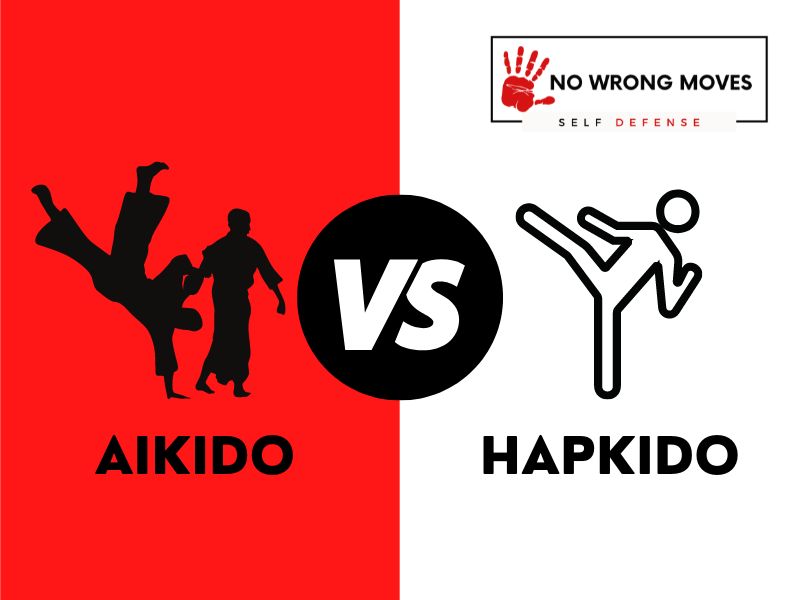
- What We Know About Aikido
- What We Know About Hapkido
- Key Elements Of Aikido
- Key Elements Of Hapkido
- Aikido Rankings & Levels
- Hapkido Rankings & Levels
- Aikido Vs. Hapkido Attire
- What A Typical Aikido Training Session Looks Like
- What A Typical Hapkido Training Session Looks Like
- Aikido Movies
- Conclusion: Aikido Vs. Hapkido
Many people in the martial arts community debate whether Aikido or Hapkido is the better practice. While both offer unique benefits and principles, there are some key differences that set them apart.
The main difference between Aikido and Hapkido is the emphasis on unarmed vs. armed techniques. Aikido focuses primarily on unarmed defense, while Hapkido incorporates both unarmed and various weapons techniques, such as knives and sticks.
Aikido also has a strong spiritual component, stemming from its roots in Japanese culture and its founder's philosophy. Hapkido, on the other hand, has a more practical and self-defense-focused approach.
Another key difference is in the throwing techniques. Aikido primarily uses circular throws and redirects an attacker's momentum, while Hapkido often incorporates joint locks and pressure point strikes in addition to throwing techniques.
At the end of it all, practitioners of both Aikido and Hapkido learn self-defense and combat skills, but their approach and emphasis may differ. It's up to you, as the individual practitioner, to determine which style best suits your personal training goals and beliefs.
What We Know About Aikido
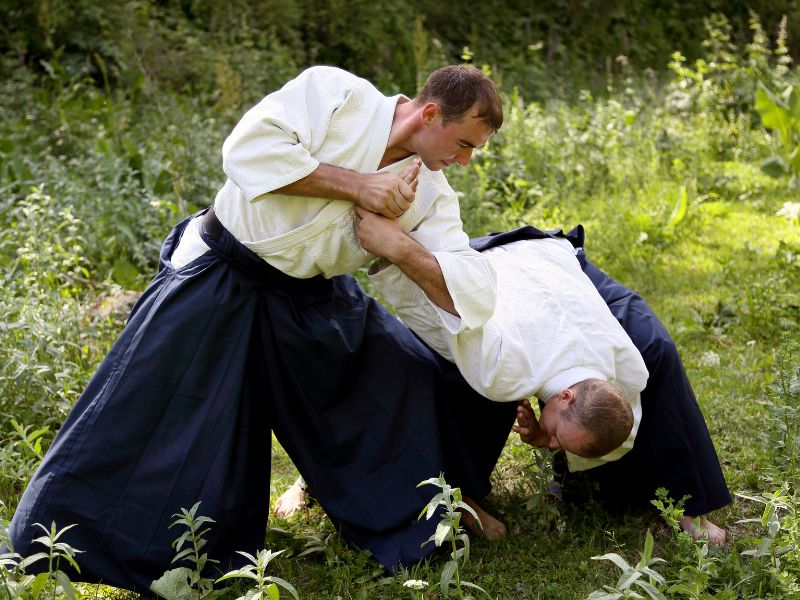
Aikido, the art of peace. Founded over fifty years ago by Master Munehide Uyeshiba who still practiced the discipline beyond the age of due to his love for this style.
It's a style that has been passed down through generations, teaching its practitioners to defend themselves while causing the least harm possible to their attacker.
The main elements of Aikido involve redirecting the energy and force of an attacker, using their own momentum against them while simultaneously controlling and neutralizing the situation. This is achieved through various throws, joint locks, and pins.
Mastering Aikido requires discipline, focus, and a strong connection to the principles of peace and harmony. It is not just an effective form of self defense, but also a way to cultivate inner peace and balance.
As Master Uyeshiba's philosophy states, the essence of Aikido is to harmonize with nature's laws, to seek unity with the universe, and to cultivate a spirit of love.
Practicing Aikido allows us not only to protect ourselves physically, but also mentally and spiritually. It is a path towards self-improvement and enlightenment. That is the true power of Aikido.
What We Know About Hapkido
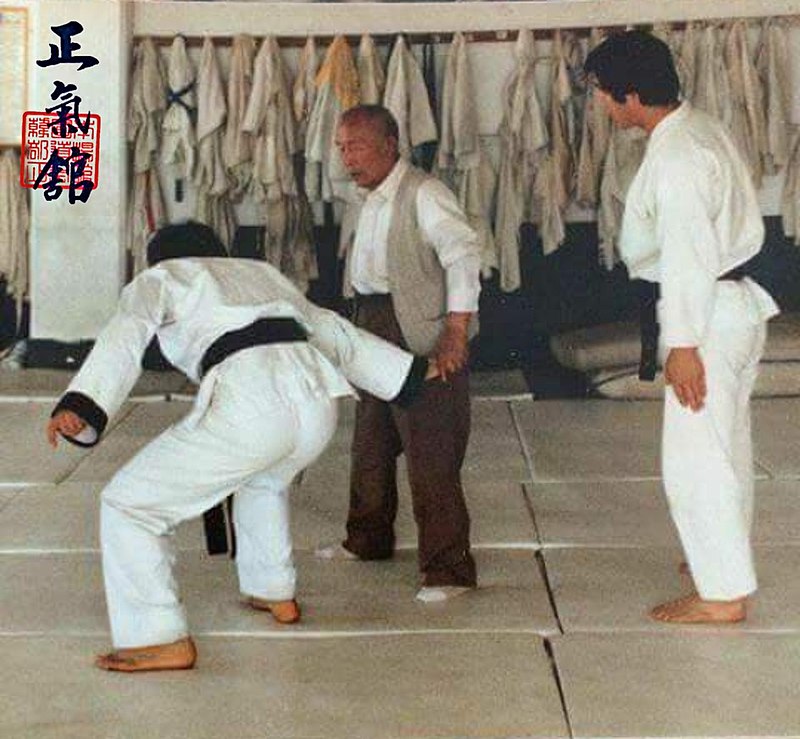
Hapkido is a Korean martial art that combines techniques from a variety of styles, including Judo, Aikido, and Karate.
It was developed by Choi Yong-Sool, who combined his knowledge of martial arts with the philosophy of Taoism. Hapkido is often seen as "the way of coordinated power."
Hapkido focuses on using an attacker's momentum and leverage to control them, rather than relying on brute strength.
It also emphasizes the use of joint locks and throws to incapacitate an opponent. Hapkido practitioners also learn techniques for defending against weapons such as knives and guns.
In addition to self-defense, Hapkido training also includes meditation and breathing exercises to improve physical and mental well-being.
Hapkido is a popular martial art in Korea, with many schools and organizations dedicated to its practice. It has also gained recognition internationally, with practitioners found all over the world.
Of course, this is only a brief history and understanding of Aikido and Hapkido, but if you want to go deeper into either art, be sure to check out the following posts:
Now, back to the comparison...
Let's look at the origins of the respective disciplines and then compare the key elements of their practices. You will be able to understand some of their similarities and differences a bit better afterward.
| Aikido | Hapkido | |
| Origins | Japanese | South Korean |
Key Elements Of Aikido
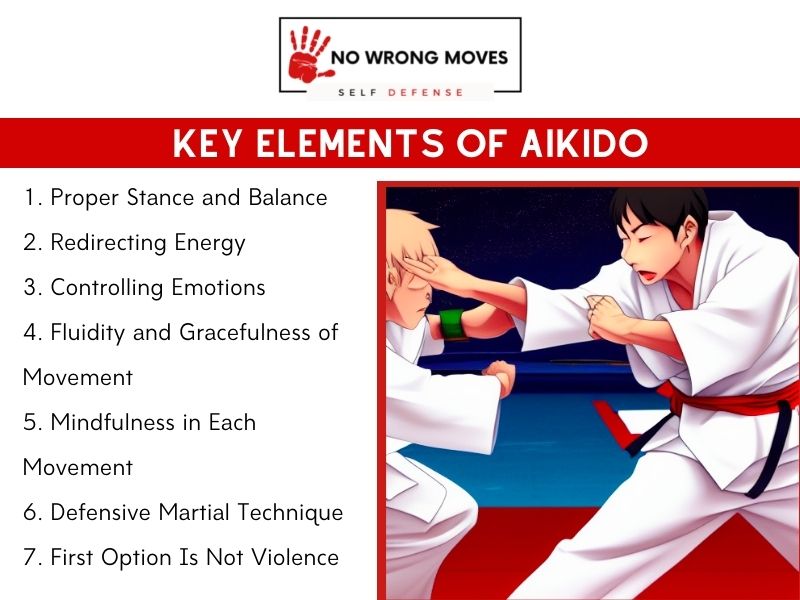
Aikido is a Japanese martial art that focuses on the proper stance and balance of the practitioner. Proper stance and balance are critical components of Aikido, as they provide the foundation for all other techniques.
A stable and balanced stance allows the practitioner to move fluidly and with control, making it easier to perform techniques effectively.
In Aikido, practitioners learn to redirect their opponent's energy rather than using force against them. Redirecting energy is one of the fundamental aspects of Aikido, and it's difficult to separate this idea from the sport itself.
Through properly redirecting an opponent's energy, Aikido practitioners can use their opponent's momentum against them, rather than relying on their own strength.
Apart from physical techniques, Aikido also emphasizes controlling one's emotions. Practitioners learn to remain calm and focused, even in stressful situations.
Aikido also places a strong emphasis on non-violent conflict resolution. The first option in any situation is to find a peaceful resolution, rather than resorting to violence.
Remember that in Aikido, the first option is not violence, and it reflects the overall philosophy of Aikido as a martial art focused on peace and harmony.
Key Elements Of Hapkido

The Five Principles of Hapkido:
Hapkido philosophy emphasizes the use of circular motion, non-resistance, and control of the opponent in a manner that is not overly aggressive.
These principles of hapkido are:
- Water Principle: Adaptability and flexibility in techniques and strategies
- Circle Principle: Using circular movements to redirect and control an opponent's force
- Non-resistance Principle: Using the opponent's own energy against them instead of directly opposing force
- Mind and Body Unity Principle: Using both mental focus and physical technique to control a situation
- Indomitable Spirit Principle: Never giving up, always striving for self-improvement
These principles guide hapkido practitioners in their training and application of techniques.
Another thing I think is important to look at is the different rankings and levels in each art. if you are looking to take up either Aikido or Hapkido, whether as a hobbyist or to compete, you need to understand the different levels of proficiency and what is required for testing and ranking.
Aikido Rankings & Levels
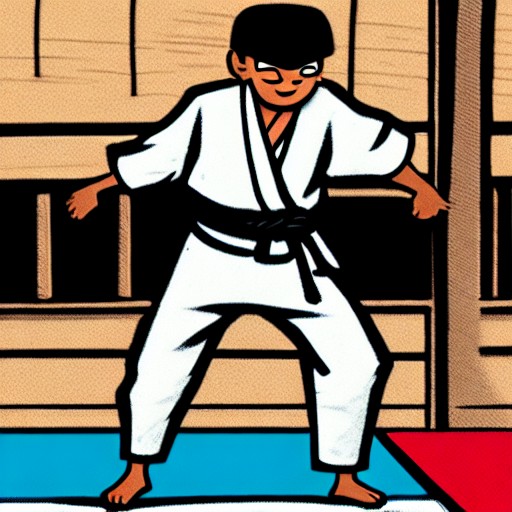
Aikido is a discipline that has many different levels, each represented by a different colored belt. The first level is white belt, which is for beginner students. Once you have mastered the basics of Aikido, you can move on to the blue belt, which is for intermediate students.
And finally, once you have mastered the art of Aikido, you can become a black belt, which is the highest level.
There are three degrees as a black belt holder: 1st dan, 2nd dan, and 3rd dan black belt. In order to achieve each of these degrees, you must pass a test that proves your mastery of Aikido.
There are also other ranks and colors that exist outside of the traditional ranking system. In some Western Aikido schools, there are more ranks added in between 1st dan and 2nd dan.
These ranks can be any combination of colors, and it allows for students to be promoted at a more gradual pace and helps to distinguish between students of different ranks.
Hapkido Rankings & Levels
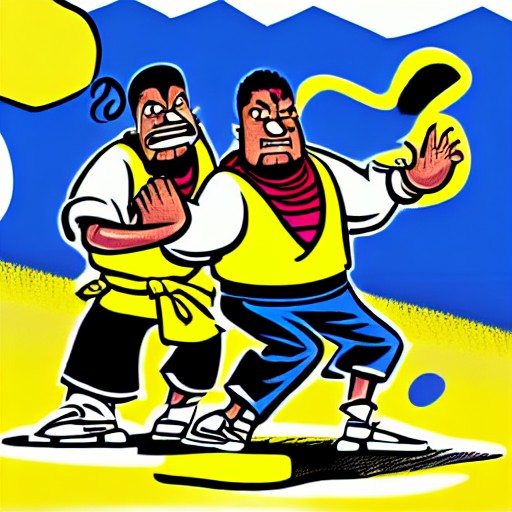
There are ten black-belt ranks in Hapkido, and these are referred to as degrees or dans. Fourth-degree black belt or higher usually refers to a master-level practitioner.
The precise number of kup ranks is system and rank dependant, but typically there are twelve grades in total. When a student begins their training they are given a white belt, which is the rank of a novice.
As they progress through their training and demonstrate proficiency in the skills required, they are promoted to a higher rank.
The level of skill, or rank, is designated by a colored belt worn around the waist. Color-belt ranks below black belt are called grades (kup in Korean).
The ten black-belt ranks are referred to as degrees or dans. Fourth-degree black belt or higher usually refers to a master-level practitioner.
This system of ranking is used in most Hapkido schools, although there can be variations between different systems and schools.
One of the benefits of progressing through the kup ranks is that students learn the importance of discipline and commitment. They must demonstrate not only proficiency in the techniques required for their rank, but also adherence to the etiquette and values of Hapkido.
This system helps to ensure that all students progress at a similar rate and achieve a high level of mastery before reaching the rank of black belt.
Aikido Vs. Hapkido Attire
This section simply compares the clothing and uniforms that practitioners wear in combat.
Aikido Attire:
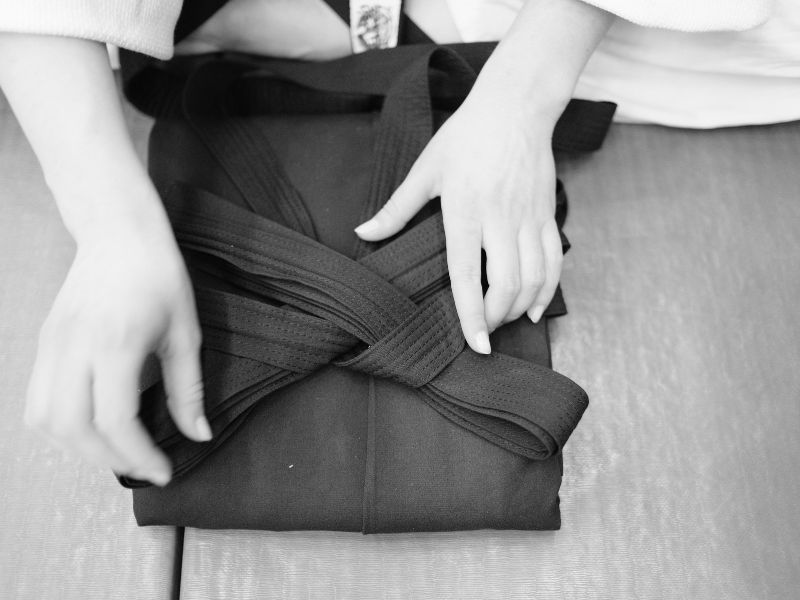
Most aikido practitioners wear a white dogi, or “uniform.” The dogi is a loose-fitting cotton kimono with a belt. In some schools, aikido students also wear hakama, which are pleated trousers that are tied at the waist and fall below the knee.
Male practitioners often don white tabi (socks), while female practitioners often wear white zori (wooden sandals). Some people also choose to practice without any clothes on in order to better feel their body and movements, but this isn't all too common.
Hapkido Attire:

When training in hapkido, practitioners typically wear a dobok (uniform) and belt that indicates their rank. Protective gear, such as mouth guards and sparring gear, may also be worn during sparring or self-defense practice.
Some schools may also incorporate the use of traditional weapons, such as the jukdo (short stick), cane, or knife.
Proper attire and equipment not only helps to ensure safety during training, but also shows respect for the art of hapkido and one's training partners.
What A Typical Aikido Training Session Looks Like

A typical Aikido practice session usually starts with a bow. This is a sign of respect for the dojo, the other students, and the instructor. The etiquette of aikido extends beyond just the bow, though. One must always be respectful, appreciative, and protective of all beings.
This attitude must be carried throughout the entire practice session.
Physical strain, whether during conditioning or in sparring against others, is part and parcel of Aikido. As such, practitioners need to maintain good manners and a positive attitude whenever they're in aikido class.
Aikido teaches you how to handle violence, but it still ultimately strives for peace, so never let your ego get in the way during your training.
Also remember that non-resistance is an essential element of proper aikido technique execution. Intercepting, deflecting, and redirecting an attack utilize the momentum and inertia of the attack.
Note that non-resistance does not mean being passively overpowered by the attack. But if you can avoid physical conflict, then you absolutely should.
It is also always important to maintain good posture and a relaxed body. Good posture includes maintaining your balance and keeping your center of gravity low. This helps you to be more aware of your surroundings and to respond more effectively to any situation.
Maintaining a relaxed body allows you to move more freely and makes it less likely that you will be thrown off balance by an attacker.
Similarly, be sure to focus on your breathing during aikido practice. This helps to calm and focus the mind, allowing for better decision making and execution of techniques.
Next, warm-up exercises are often done, including stretches and rolling or breakfalls (ukemi). These help to prepare the body for physical activity and prevent injury.
Following warm-ups, the instructor will lead the class through various aikido techniques and movements. These often involve practicing with a partner, called uke-nage (uke being the attacker, nage being the defender).
Practice with a spirit of cooperation, not necessarily competition. The goal is to mutually improve each other's technique and understanding of aikido principles, not to overpower or dominate the other person.
The practice session may also include weapons training, using a wooden sword (bokken) and wooden staff (jo). Weapons techniques often involve similar principles to those practiced with empty-handed techniques, but provide another layer of complexity and challenge.
What A Typical Hapkido Training Session Looks Like
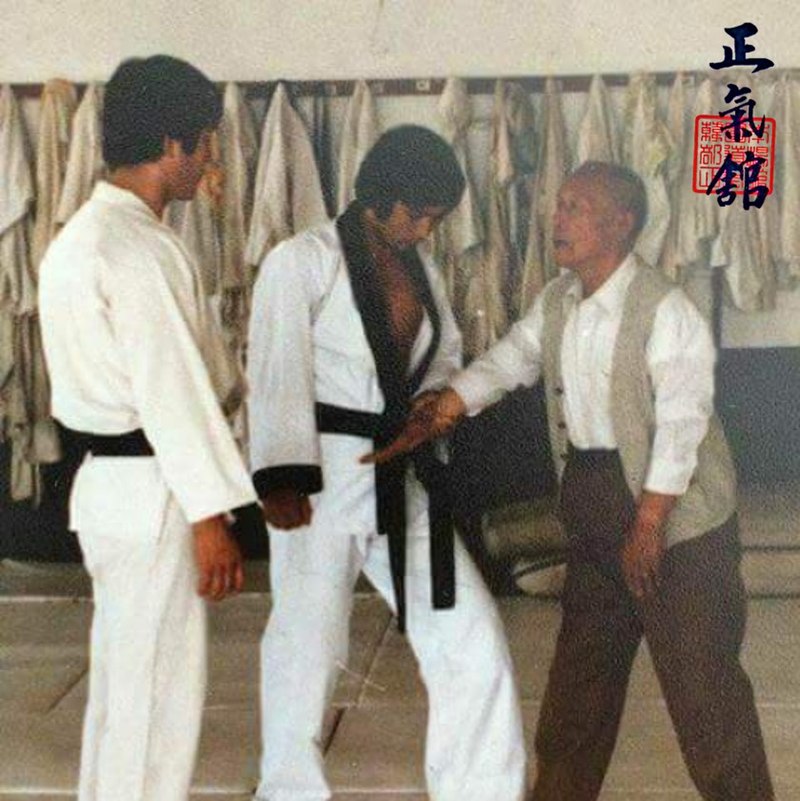
A typical Hapkido practice class will begin with a warm-up. This may include stretching, calisthenics, or light sparring. The purpose of the warm-up is to prepare the body for the more strenuous activity to come and to prevent injuries.
The next part of the class will focus on techniques. These may include punches, kicks, throws, joint locks, or pressure point strikes. Students will typically learn and practice these techniques with a partner.
Sparring is another important part of Hapkido training. Sparring allows students to put their techniques into practice in a safe and controlled environment. It also helps students to develop timing, speed, and accuracy.
Self-defense is another key component of Hapkido. Students will learn how to defend themselves against common attacks such as grabs, punches, and kicks. They will also learn how to escape from dangerous situations such as chokeholds and headlocks.
Classes will typically end with a cool-down period. This may include stretching or light exercises. The purpose of the cool-down is to help the body recover from the strenuous activity that has taken place and to prevent injuries.
If the last few sections have been a bit full-on or a bit too technical, you will like this next section! Why? Because who doesn't love a good martial arts flick?
Both Aikido and Hapkido have been featured in a number of films and TV shows, so if you want to learn more about them, then entertain yourself with the following 👊
Aikido Movies

These are some of the top movies and shows with Aikido in them:
- The Blind Swordsman: Zatoichi (2003)
- The Last Samurai (2003)
- Kill Bill: Vol. 1 (2003) and Kill Bill: Vol. 2 (2004)
- Street Fighter (1994)
- Ong-Bak: The Thai Warrior (2003)
- The Challenge (1982) TV series
Aikido can also be seen in popular shows such as:
- Daredevil (2015) TV series
- Arrow (2012) TV series
- Alias (2001-2006) TV series
- Chuck (2007-2012) TV series
- Xena: Warrior Princess (1995-2001) TV series
Some cool movies and anime with Hapkido:
- The Matrix (1999)
- Oldboy (2003)
- Karate Kid (1984)
- Kill Bill: Volume 1 (2003)
- Naruto (2002-2007)
- Bleach (2004-2012)
- My Hero Academia (2016-present)
Hapkido plays a big role in these works, showing off its fluid and versatile nature in combat. It's no surprise that it's becoming increasingly popular in the media and real life.
Conclusion: Aikido Vs. Hapkido
I hope you now have a deeper understanding of Aikido and Hapkido. In all truth, it is not about which discipline is "better" as they each have their pros and cons. If you do plan on starting classes for either, please check out my other related posts, as I have tried my best to answer all the FAQs related to the art.
Feel free to share this post and any graphics you like, and of course, if you have any questions or thoughts, drop them below or shoot me an email, and I will be happy to assist 🙂
Curious to learn more about other martial arts? Check out BJJ here!
[author-box-jpx-fitness]
